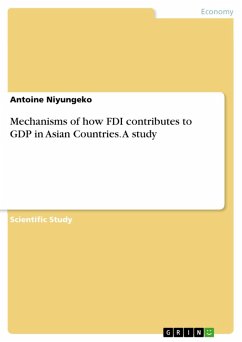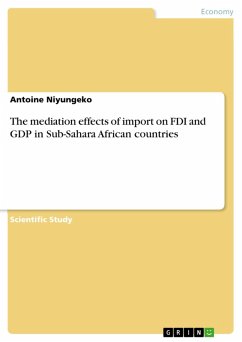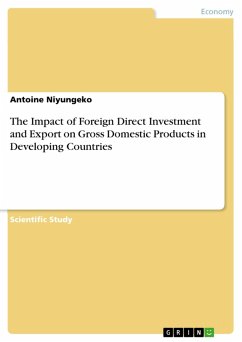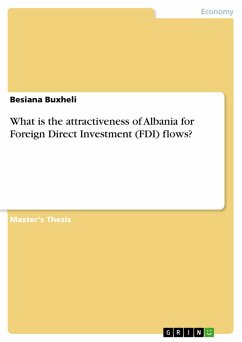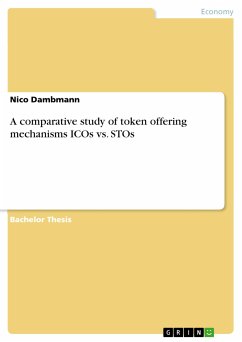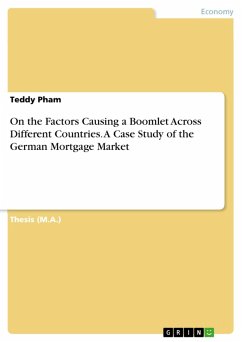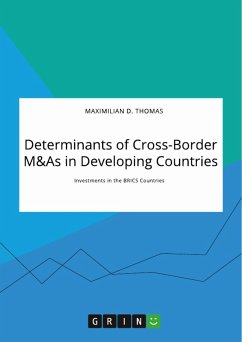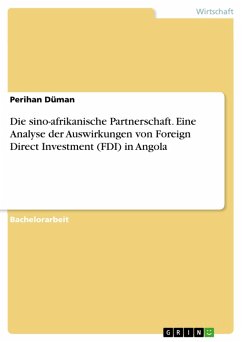Scientific Study from the year 2021 in the subject Business economics - Investment and Finance, grade: "-", , language: English, abstract: The study aims to analyze mechanisms by which foreign direct investment inflows (FDI) contributes to gross domestic product (GDP) in Asian countries. FDI is used as an independent variable. GDP is used as dependent variable. Export (EXP), house hold consumption (HHC), and gross capital formation (GCF) are used as mediator variables. Many studies analyzed direct relationships between FDI and GDP without explaining how FDI contributed to GDP. Therefore, little is known about the way FDI contributes to GDP in the receiving country. The study focuses on the question: What is the indirect relationship between FDI and GDP in Asian Countries? The novelty of this paper is to provide a deep understanding on how FDI is related to GDP in Asian countries which did not get much attention in prior literature. The study used causal mediation analysis with bootstrap procedure. Annual data 2018 related to FDI, GDP, EXP, HHC, and GCF were collected from the World Bank website. The impact of foreign direct investment on economy growth got much attention in all continents. The findings of the prior researches show mixed results. Some of them concluded that FDI has positive impact on GDP. While other concluded that FDI has negative effect on GDP. For instance, Raghuveer and Muthusamy (2019) investigated the relationship between FDI and economic growth in some Asian countries including Bangladesh, China, India, Lao PDR, Mongolia, Korea Republic and Sri Lanka. They used Ordinary Least Squares, Augmented Dicky-Fuller and Granger Causality test, and found that the effect of FDI inflow on economic growth was not the same in the analyzed countries. Diouf and Hai (2017) examined the effect of the interaction between FDI, trade openness and economic growth with by focusing on Asian FDI, trade and 13 West African countries covering the period 1980-2015. They used Fully Modified Ordinary Least Squares.
Dieser Download kann aus rechtlichen Gründen nur mit Rechnungsadresse in A, B, BG, CY, CZ, D, DK, EW, E, FIN, F, GR, HR, H, IRL, I, LT, L, LR, M, NL, PL, P, R, S, SLO, SK ausgeliefert werden.

